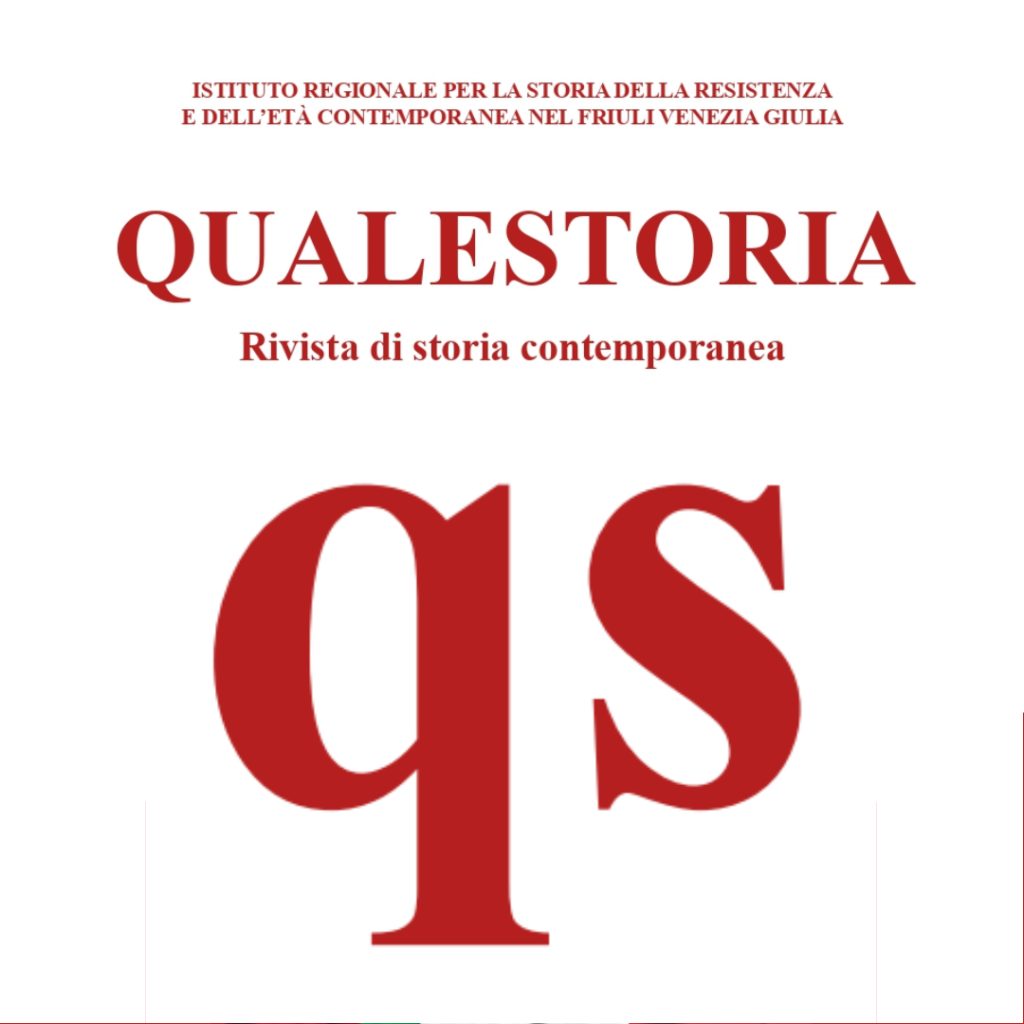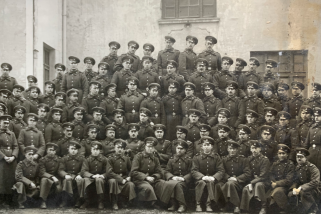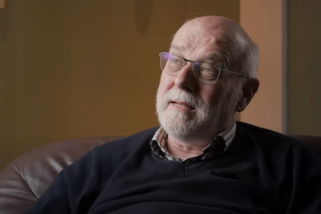 Military Journalism in Russia and the Commonwealth of Independent States (CIS)
Military Journalism in Russia and the Commonwealth of Independent States (CIS)
The deadline for article submission is January 25th, 2014
Journal of Power Institutions in Post-Soviet Societies, Issue 16 – Spring 2014
In the sociology of media, the question of military journalism occupies a special place as one carrying significant political and institutional-specific implications. This is particularly obvious in the case of the USSR, where censorship, ideological challenges related to conflicts, and inaccessibility of the army have hindered attempts to gain knowledge of the production process regarding news and information surrounding the military. Since the fall of the USSR, Russian media space has experienced an opening and a liberalization applicable to military journalism. The old Soviet army newspapers have continued to exist (Krasnaia Zvezda, for example) while civil titles dedicated to military topics have appeared (for instance, the military supplement Nezavisimoe Voennoe Obozrenie of the daily newspaper Nezavisimaia Gazeta). At the same time, new independent media have gravitated toward military topics, fed by specialized civil correspondents.
The post-Soviet period has been favorable to media coverage of military issues. Interest lies, first and foremost, with concerns about the future of the army. Problems surrounding the conversion of military industry, the management of nuclear armaments, the reduction of manpower, and the fight against violence in the barracks (dedovshchina) have fed media chronicles and contributed to the development of a journalism specialized in military queries.
In addition, the numerous armed conflicts which have erupted in the post-Soviet space (such as in Chechnya but also in Moldova, in Nagorny Karabakh and more recently in Georgia) raise the question of how these clashes should be portrayed by the media. “The war is one of the privileged moments of production of media information,” notes A.J. Bizimana[1]. But it is also a time when pressures between the principles of freedom of the press, on one side, and institutional control measures on the media, on the other, are at their maximum.
This issue of The Journal of Power Institutions in Post-Soviet Societies will be devoted to military journalism in the USSR, Russia and the Commonwealth of Independent States (CIS) from concurrent historical, sociological and political points of view. It will examine the faces of tension and compromise between freedom of the press and constraints suitable for military journalism.
[1] A.-J. Bizimana, « Les risques du journalisme dans les conflits armés », Communication, # 1, 2006.
The history of military journalism and war journalism in the USSR
Before embarking on a reflection about the contemporary period, and in order to assess progress made since the fall of the USSR, this issue will welcome historical articles as well as interviews related to the media situation in the military during the Soviet period.
The articles could focus on the following themes:
The distinction between military journalism and war journalism; during the Great Patriotic war, hundreds of journalists were transformed into war reporters.
The specificity of organs of the press (Krasnaia Zvezda for example), of other media (radio and television) and of their programs (“Sluzhu otechestvu”, “sluzhu Rossii”, “Aty-Baty”, “Prisiaga”…) dedicated to military questions during the Soviet era.
The « Commandeered » journalism phenomenon (prikommnadirovannaia zhurnalistika); this term describes the “placement”, during the Soviet period, of military journalists in leading newspapers, or media in general, in order to ensure a “correct” covering of military topics as well as to improve the image of the armed forces inside and outside the country.
The media coverage of military issues during times of conflict (The Civil War, Great Patriotic War, intervention in Afghanistan…)
Analysis of the fictional figure of the “war reporter” or the “military correspondent” during the Soviet period.
The liberalization of the military media in Russia and the CIS
For the post-Soviet period, a reflection on liberalization of the media in Russia and the CIS will be carried out. After the glasnost period, freedom of the press became recognized, and a privatization of media outlets ensued.
The 1990s were characterized, on one hand, by the question of evolving military press organs and, on the other hand, by the development of private, independent media interested in military affairs.
Proposed articles could answer the following questions:
How did new political and economic realities transform the statutes of military press organs, the coverage granted to military inquiries by private media, or the status of military journalists? On the media side, new concern for economic profit might have placed heavy demands on military journalists.
Regarding the sociology of military journalists: who are they? Are they active duty military personnel or civilians? How are they trained? What channels or mechanisms allow for transfers and reconversions between the civil and military press organs? (We refer here to military journalists leaving the military press to join the civil press or to create independent information agencies (Postfactum, created by a general of the armed forces)).
What are the alternative sources of information on military subjects (NGOs, Soldiers’ mothers)? Which of these are available/accessible?
What issues relate to foreign journalists and the specific constraints imposed on them?
What differentiating processes exist between the military press in Moscow and in other regions?
For the most recent period, since the end of the1990s, the reflection could be expanded to the use of new technologies for information acquisition and communication in military journalism, or to diversification of the online media space.
The new forms of control on military journalists
Liberalization of the media, however, has been accompanied by new kinds of constraints and control over military journalists. If direct institutional constraint (i.e. censorship) has disappeared, the political framing of military journalists has taken new forms. These articles could cover the following topics:
The evolution of Ministry of Defense communication strategies:
Reformation of press services and the creation of new media within the Ministry of Defense.
The creation of new military media per se:
Russkii voennyi Zhurnal addresses a civilian audience in contrast to all the publications of the ministry of Defense;
The creation of a cross-media group controlled by the Ministry of Defense including the TV channel Zvezda, a radio station, an advertising agency, and an internet “presence”.
The brutal forms of control which remain and can lead to violence against independent and critical journalists (for example, against Dmitri Kholodov or Anna Politkovskaia).
The flexible forms of constraints, often inspired by Western practices, which have also been tested by the military institution:
The return of Soviet practices, such as enlistment of representatives of the army and the power ministries in the media, is noticeable as soon as 1995.
The practice of “embedded” journalists, used at the time of armed conflicts, thus making it possible to control the dissemination of information and stymie the emergence of alternative viewpoints.
The creation of structures to control the flow of information from troops on the battlefield:
The Russian Information Center (October 1999);
Kavkaz, a closed internet system for the troops.
Guidelines for article submission
The journal will be published in three languages (French, English and Russian with a 100-word abstract in English) thanks to which most authors will be able to write in their mother tongue.
This will ensure greater precision in the articles and avoid a decrease in scientific quality. But we draw your attention to the fact that most pipss.org readers are essentially English speakers, therefore we do encourage articles in English in order to reach an audience as broad as possible.
The articles submitted to pipss.org for publication (30.000 to 50.000 signs) should be original contributions and should not be under consideration for any other publication at the same time.
Manuscripts should be attached as Microsoft Word format. References should be given in footnotes.
For more details about the guidelines for article submission please check http://www.pipss.revues.org or contact the Editorial Board e.siecakozlowski@gmail.com.
There should be a cover page stating the author’s background and affiliation, full address.
If you wish to submit an article, please first contact the Chief Editor (e.siecakozlowski@gmail.com) and send a 100-word abstract in English.
The deadline for article submission is January 25th, 2014, with publication in May 2014.
Final decisions on publication will be made by the Editorial Board.
Please send your contributions or inquiries to: Elisabeth Sieca-Kozlowski, Chief Editor, e.siecakozlowski@gmail.com
Issue Editors
Françoise Daucé
Elisabeth Sieca-Kozlowski
Bibliography
In French
E. Sieca-Kozlowski, « Du contrôle de l’information militaire au contrôle de la société. Les enjeux politiques des transformations des médias militaires », in Culture militaire et patriotisme dans la Russie d’aujourd’hui, Paris, Karthala, 2008, pp. 97-121.
A.-J. Bizimana, « Les risques du journalisme dans les conflits armés », Communication, # 1, 2006.
A.-J. Bizimana, « Les relations militaires-journalistes : évolution du contexte américain », Cahiers du journalisme, # 16, Automne 2006, http://www.cahiersdujournalisme.net/cdj/pdf/16/08_BIZIMANA.pdf
A. Balguy-Gallois, « Protection des journalistes et des médias en période de conflit armé », Revue internationale de la Croix-Rouge, # 86(853), 2004, pp. 37-67.
J.-M. Charon « Informer sur la guerre », in J.-M. Charon et Arnaud Mercier (Dir.), Armes de communication massive. Informations de guerre en IRAK : 1991-2003, Paris, CNRS Éditions, 2004, pp. 36-40. (Coll. « CNRS Communication ».)
C. Oger & C. Ollivier-Yaniv, « Analyse du discours institutionnel et sociologie compréhensive : vers une anthropologie des discours institutionnels », Mots. Les langages du politique. # 71, 2003.
M. Mathien (Dir.), L’information dans les conflits armés : du Golfe au Kosovo, Paris, L’Harmattan, 2001.
C. Oger, « De l’esprit de corps au corps du texte : cohésion militaire et dissolution journalistique », Langage et société, # 4, 2000.
M. Mathien, « Les médias et l’actualité de défense, les journalistes face aux militaires ou vice-versa », Quaderni, # 36, 1998, pp. 15-31.
In English
E. Sieca-Kozlowski, “From Controlling Military Information to Controlling Society: The Political Interests Involved in the Transformation of the Military Media under Putin” in Crisis in the Caucasus: Russia, Georgia and the West, P. Rich (Ed.), Routledge, 2009.
J. Carroll, « Letter from Baghdad: What a way to make a living », American Journalism Review, February/March, 2005, pp. 54-56.
Th. Hanitzsch, “Journalists as peacekeeping force?”, Peace Journalism and mass communication theory. # 4, 2004.
I. Safranchuk, M. Pogorelyi (Eds.), Contemporary Russian Military Journalism. Achievements, Problems, Perspectives, Center for Defense Information, Center of War and Peace Journalism, Washington, DC / Moscow, Russia, July 2004.
M. Pfau, “Embedding Journalists in Military Combat Units: Impact on Newspaper Story Frames and Tone”, Journalism and Mass Communication, March 2004, pp. 74-88.
S. Allan, & B. Zelizer, Reporting War: Journalism in Wartime, London and New York: Routledge, 2004.
B. Katovsky, & T. Carlson, Embedded : The Media at War in Iraq, Guilford, Lyons Press, 2003.
A. Feinstein, J. Owen & N. Blair, « A hazardous profession: War, journalists, and psychopathology », American Journal of Psychiatry, 159(9), 2002, pp. 1570-1575.
H. Himmelstein & E. P. Faithorn, « Eyewitness to disaster: How journalists cope with the psychological stress inherent in reporting traumatic events », Journalism Studies, # 3(4), 2002, p. 537-555.
In Russian
« Voennaia Zhurnalistika », Media Trendy, # 6(35), November 2012.
V. M. Amirov, “Kontsept ‘Voennaia Reforma’ v diskurse voennoi”, Izvestiia Ural’skogo federal’nogo universiteta, Seriia 1: Problemy obrazovaniia, nauki i kultury, Seriia 1: Problemy obrazovaniia, nauki i kul’tury, # 4, 2009, S. 60-64.
V. M. Amirov, Lokal’naia voina v zerkale rossiiskoi voennoi pressy: kontseptosfera i pragmatika dvukh diskursov, Izd. Ural. Gos un-ta Ser, 2007.
M. Pogorelij, & I. Safrajtchuk, Sovremennaiarossiiskaiazhurnalistika : opyt, problemy, perspektivy, Moskva, 2002, 254 pages, http://www.icrc.org/rus/resources/documents/misc/69ubyt.htm
N. P. Popov, N.A. Gorokhov, Sovetkaiavoennaiapechat’ vgodyVelikoiOtechestvennoivoiny, 1941-1945, Voen. Izd. MO, 1981.
S. I. Zhukov, Frontovaiapechat’ vgodyVelikoiOtechstvennoivoiny, Izd. Mosk. Universiteta, 1968.











